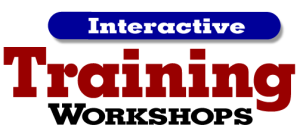For years, our Interactive Counselor Training workshops have included a section in which we pose a question to the counselors: “Why should someone attend your college?” Predictably, we get myriad responses that include features and benefits that could apply to a great many colleges such as, “We are small and you get highly personalized attention here.” Or, “We are large and give you all the benefits of variety and diversity in our programs and people.”
 Pick any attribute and benefit that you communicate about your college and in all likelihood there are many other colleges that are saying exactly the same thing. Falling into this trap is essentially the same as stepping up to the plate and calling two strikes on yourself before the first pitch. You can’t differentiate your college in the hearts and minds of prospective students.
Pick any attribute and benefit that you communicate about your college and in all likelihood there are many other colleges that are saying exactly the same thing. Falling into this trap is essentially the same as stepping up to the plate and calling two strikes on yourself before the first pitch. You can’t differentiate your college in the hearts and minds of prospective students.
To help colleges counteract this tendency, we use a video of Simon Sinek talking about “finding the why.” Sinek is a leadership authority, professor at Columbia University, and author whose philosophy is that people “don’t buy what you do, they buy why you do it.” In one of the most watched TED talks of all time, he suggests that people will buy from you if they sense that you believe what they believe. I highly recommend watching his video. Click here to see it now.
Sinek’s video serves as a springboard for an in-depth discussion of the importance of framing your institution’s value in a way that resonates with what the prospective student believes and finds important in a college. Unfortunately, we have discovered that many colleges don’t truly know what they believe in. They may understand and articulate the attributes of their institution. They can give you many good reasons why they think they are the best college for you. But they have never gone though the process of distilling all of their special qualities into a single belief – an overarching value proposition that the student will immediately find meaningful and compelling.
If this seems a bit abstract, let me share a real-world example from our own experience. Often, a college will ask us, “What do you do?” We say, “At Longmire and Company we believe that the conversations between prospective students and the colleges they are considering can be much richer and more fruitful for both. Everything we do helps colleges better understand and communicate with prospective students.” We usually follow up with specifics, “This includes counselor training workshops, yield enhancement tools to help you get to know students better, and other products and services that enable a college to attract and enroll prospective students.”
Please trust me that I didn’t insert all of this just to plug Longmire and Company. If you don’t know us, and I just tell you WHAT we do, it has no context. And it’s probably boring. But if I first tell you WHY we do what we do, it gives meaning to the products and services we have. And if you believe – like we do – that having richer conversations with your prospective students will lead to greater enrollment, then you’re most likely to trust that we can help you.
The same cognitive and emotional process holds true when prospective students ask you (in direct and indirect ways) why they should attend your school. Instead of citing features and benefits like the inherent advantages of your small or large school, or the beautiful campus, or your famous alumni, football team or other renowned attribute, first tell them what you believe. “At XYZ University,” you might say, “we believe that students should have the opportunity to ….” Or, “At XYZ, we believe that students deserve ….”
Once prospective students know what you believe and why you do what you do, all of the features and benefits that you present will have context and greater meaning. They will carry greater weight. They will be more compelling. And even though your individual attributes may be similar to that of other institutions, the student will perceive them as being different because you have delivered them in a context that makes you unique.
First you have to find your “why.” Then, you must articulate it clearly and concisely. Finally, you must be able to translate it into how you serve students.
 We’ve helped many colleges do this while we’re on campuses conducting our Interactive Training Workshops. Since our workshops are completely customized, we often include activities for the sole purpose of defining “WHY.” Recently, we had the opportunity to conduct a workshop that included not only admission counselors and staff but also coaches, faculty, financial aid counselors, and members of the bursar’s office. The workshop included a breakout session of small groups who were challenged to complete the following sentence, “At [the college’s name] we believe….” The rules of this exercise mandated that they discuss it as a group and arrive at a mutually agreeable statement that reflected the underlying belief of the college and how that belief gets translated into serving students in ways that are unique.
We’ve helped many colleges do this while we’re on campuses conducting our Interactive Training Workshops. Since our workshops are completely customized, we often include activities for the sole purpose of defining “WHY.” Recently, we had the opportunity to conduct a workshop that included not only admission counselors and staff but also coaches, faculty, financial aid counselors, and members of the bursar’s office. The workshop included a breakout session of small groups who were challenged to complete the following sentence, “At [the college’s name] we believe….” The rules of this exercise mandated that they discuss it as a group and arrive at a mutually agreeable statement that reflected the underlying belief of the college and how that belief gets translated into serving students in ways that are unique.
The results were nothing short of amazing. This diverse group of individuals, representing nearly every branch of the college, ultimately adopted a singular statement that all thought accurately represented the central belief of the institution. Moreover, they were able to share many examples of how their now-defined “WHY” can provide greater weight and meaning to their features and benefits statements.
Now, instead of simply saying they are a small college that delivers highly personalized service, they are now saying, “At [the college name], we believe that students deserve…and as a small college, we deliver on that belief by….” Their clearer understanding of who they are, and what they fundamentally deliver to students, helps them articulate how they are extraordinary in the sea of choices available to prospective students. That clarity naturally infuses itself in every conversation they now have with prospective students.
We’ve been on many campuses over the years conducting workshops and I can tell you that the vast majority of the colleges we’ve worked with have a deeply-rooted sense of who they are, and how they are different. They just don’t know how to articulate it precisely.
If you fall in this category, do this: Gather some people from your college (from as many departments as you like), mix them up and break them out into groups, and ask them to complete this sentence, “At [your college name], we believe …”
Continue the conversation on Twitter @LongmireCo. For more information about Longmire and Company’s Interactive Counselor Training Program, click here. Be sure to Subscribe to Versions of Conversion today so you don’t miss any of this highly-valuable information.
 Bob Longmire is President of Longmire and Company, Inc. He is a recognized expert on the topic of how prospective students and parents form their college selection decisions – and how colleges can use that knowledge to grow and control their enrollment. He can be reached at (913) 492-1265, ext 709 or at blongmire@longmire-co.com. Connect with Bob at Linkedin/in/boblongmire.
Bob Longmire is President of Longmire and Company, Inc. He is a recognized expert on the topic of how prospective students and parents form their college selection decisions – and how colleges can use that knowledge to grow and control their enrollment. He can be reached at (913) 492-1265, ext 709 or at blongmire@longmire-co.com. Connect with Bob at Linkedin/in/boblongmire.
 As admission professionals, we know that creating a connection with a student can greatly increase the likelihood of his or her enrollment. We know that building relationships and continually strengthening those bonds is crucial. But big questions remain unanswered: “What can I do to influence relationship-building with prospective students in all aspects of our recruitment efforts, from social media to personal contact?” “How can I involve all influencers, on or off campus, in the development of rich relationships with our prospective students?” And, “have we, or have we not, built bonds with our pool of prospective students?”
As admission professionals, we know that creating a connection with a student can greatly increase the likelihood of his or her enrollment. We know that building relationships and continually strengthening those bonds is crucial. But big questions remain unanswered: “What can I do to influence relationship-building with prospective students in all aspects of our recruitment efforts, from social media to personal contact?” “How can I involve all influencers, on or off campus, in the development of rich relationships with our prospective students?” And, “have we, or have we not, built bonds with our pool of prospective students?” Rick Montgomery is as an Enrollment Strategist at Longmire and Company. With over 20 years in higher education marketing, he brings an innovative approach to helping colleges and universities meet their enrollment goals. Rick can be reached at 913/492.1265 x.708 or via email at rmontgomery@longmire-co.com.
Rick Montgomery is as an Enrollment Strategist at Longmire and Company. With over 20 years in higher education marketing, he brings an innovative approach to helping colleges and universities meet their enrollment goals. Rick can be reached at 913/492.1265 x.708 or via email at rmontgomery@longmire-co.com.
 pleasing to the eye, clean and well-kept?
pleasing to the eye, clean and well-kept?
 Pick any attribute and benefit that you communicate about your college and in all likelihood there are many other colleges that are saying exactly the same thing. Falling into this trap is essentially the same as stepping up to the plate and calling two strikes on yourself before the first pitch. You can’t differentiate your college in the hearts and minds of prospective students.
Pick any attribute and benefit that you communicate about your college and in all likelihood there are many other colleges that are saying exactly the same thing. Falling into this trap is essentially the same as stepping up to the plate and calling two strikes on yourself before the first pitch. You can’t differentiate your college in the hearts and minds of prospective students.

 The answer is: Take a personal interest in the prospective student.
The answer is: Take a personal interest in the prospective student. 

